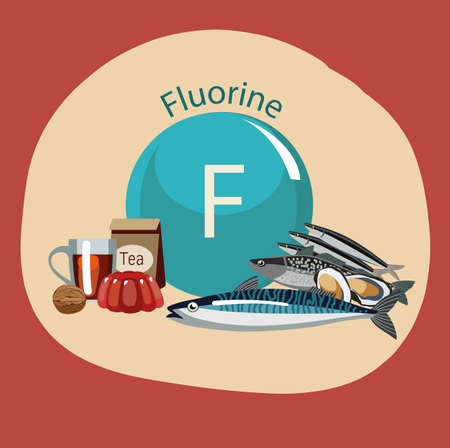
Fluoride
In the early nineteenth century, fluoride was first discovered in animals. Although the role of fluoride in controlling tooth decay has long been known, it is only in recent years that the need for this element has been realized. Very few amounts of fluoride are naturally present in the tissues of the human body, especially in the bones, teeth, thyroid gland, and skin.
The need for small amounts of fluoride to protect teeth from decay and the need for laboratory animals to grow has been well understanding.
Attention to the role of nutritional fluoride began in 1931 when it became clear that people who used fluoridated water had little or no tooth decay. However, they have brown spots on their teeth. An attempt to identify these brown spots by a dentist in Colorado began in 1281 (1902).
At the recognition time of fluoride's role in these brown spots formation and the reduction of tooth decay, other studies showed that low levels of fluoride in water, while reducing tooth decay, would not leave a trace of brown spots. In 1321 (1942), the relationship between fluoride in water and the rate of tooth decay was discovered. It was shown that water that contains one part per million, fluoride causes reduction tooth decay by about 50%-60%, and the effect of stains does not see as brown spots. In some developed countries, the prevalence of tooth decay has decreased by 50% in the last 15-20 years. It happens due to the fluoridation of drinking water.
Fluoride Food Sources:
There is a source of fluoride in drinking water mainly; if the water contains one part per million fluorides, one to two milligrams of this element provide the body daily. About 25% of the other mg reach the body through tea and solid foods. Fish is also a good source of fluoride. Some studies show that the fluoride content of prepared or cooked foods may be 2 to 3 times higher than fresh foods. It is the case if the food would prepare with fluoridated water. The fluoride in vegetables depends on the fluoridation of the water in that area, in which case the amount increases as well. The amount of fluoride in the diet of the communities living in these areas is about 3 to 4 times higher than the communities whose water has not fluoridated. It is interesting to know that a cup of tea contains one milligram of fluoride. Animal foods such as meat, liver, and seafood provide significant amounts of fluoride. Cooking food in Teflon containers (a polymer containing fluoride) increases its intake.
Fluoride poisoning:
Although there have been concerns about the possibility of poisoning consuming fluoridated water, there is no evidence that such poisoning has occurred. Under laboratory and experimental conditions, high levels of fluoride associates with bone staining, high calcium retention, and impaired connective tissue formation. These effects are exacerbated by deficiencies in vitamin C, protein, and calcium. Usually, more spots accumulate on the anterior teeth of the upper jaw. This poisoning is also observed among factory workers who deal somehow with fluoride-containing salts such as aluminum smelters. Symptoms include anorexia and thickening of the bone mass (sclerosis) in the bones of the spine, pelvis, and thighs with neurological disorders.




